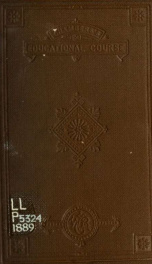Phaedrus

Phaedrus (c. 15 BC – c. AD 50), Roman fabulist, was probably a Thracian slave,[1] born in Pydna of Macedonia (Roman province) and lived in the reigns of Augustus, Tiberius, Caligula and Claudius. He is recognized as the first writer to Latinize entire books of fables, retelling in iambic metre the Greek prose Aesopic tales. According to his own statement (prologue to book III), he was born on the Pierian Mountain in Macedonia, but he seems to have been brought to Italy at an early age, since he mentions reading a verse of Ennius as a boy in school. According to the heading of the chief manuscript he was a slave and was freed by Augustus. He incurred the wrath of Sejanus, the powerful minister of Tiberius, by some supposed allusions in his fables, and was brought to trial and punished. We learn this from the prologue to the third book, which is dedicated to Eutychus, who has been identified with the famous charioteer and favorite of Gaius. The fourth book is dedicated to Particulo, who seems to have dabbled in literature. The dates of their publication are unknown, but Seneca, writing between AD 41 and 43, knows nothing of Phaedrus, and it is probable that he had not yet published anything. His work shows little or no originality; he simply versified in iambic trimeters the fables current of his day under the name of "Aesop," interspersing them with anecdotes drawn from daily life, history and mythology. He tells his fable and draws the moral with businesslike directness and simplicity. His language is terse and clear, but thoroughly prosaic, though it occasionally attains a dignity bordering on eloquence. His Latin is correct, and except for an excessive and peculiar use of abstract words, shows hardly anything that might not have been written in the Augustan age. From a literary point of view Phaedrus is inferior to Babrius, and to his own modern imitator, La Fontaine; he lacks the quiet picturesqueness and pathos of the former, and the exuberant vivacity and humour of the latter. Though he frequently refers to the envy and detraction which pursued him, Phaedrus seems to have attracted little attention in antiquity. He is mentioned by Martial, who imitated some of his verses, and by Avianus. Prudentius must have read him, for he imitates one of his lines (Prud. Cath. VII 115; ci. Phaedrus, IV 6, 10). The first edition of the five books of Phaedrus was published by Pithou at Troyes in 1596 from a manuscript now in the possession of the Marquis of Rosanbo. Near the beginning of the 18th century, a manuscript of Perotti (1430-1480), archbishop of Siponto (Manfredonia, in Apulia), was discovered at Parma containing sixty-four fables of Phaedrus, of which some thirty were previously unknown. These new fables were first published in Naples by Cassitto in 1808, and afterwards (much more correctly) by Jannehli in 1809. Both editions were superseded by the discovery of a much better preserved manuscript of Perotti in the Vatican Library, published by Angelo Mai in 1831. For some time the authenticity of these new fables was disputed, but they are now generally accepted as genuine fables of Phaedrus. They do not form a sixth book, for we know from Avianus that Phaedrus wrote only five books, but it is impossible to assign them to their original places in the five books. They are usually printed as an appendix. In the Middle Ages Phaedrus exercised a considerable influence through the prose and verse versions of his fables, which were current, even though his own works (and even his name) were apparently forgotten. Of the prose versions, the oldest existing one seems to be that known as the Anonymus Nilanti, so called because first edited by Nilant at Leiden in 1709 from a manuscript of the 13th century. It follows the text of Phaedrus so closely that it was probably made directly from it. Of the sixty-seven fables which it contains, thirty are derived from lost fables of Phaedrus. The largest, oldest known and most influential of the prose versions of Phaedrus is that which bears the name of Romulus. It contains eighty-three fables, is as old as the 10th century, and seems to have been based on a still earlier prose version, which, under the name of "Aesop," and addressed to one Rufus, may have been made in the Carolingian period or even earlier. About this Romulus nothing is known. The collection of fables in the Weissenburg (now Wolfenbüttel) manuscript is based on the same version as Romulus. These three prose versions contain in all one hundred distinct fables, of which fifty-six are derived from the existing fables and the remaining forty-four presumably from lost fables of Phaedrus. Some scholars, as Burmann, Dressier and L Muller, have tried to restore these lost fables by versifying the prose versions. The prose Romulus collection became the source from which, during the second half of the Middle Ages, almost all the collections of Latin fables in prose and verse were wholly or partially drawn. A version of the first three books of Romulus in elegiac verse, possibly made in around the 12th century, was one of the most highly influential texts in medieval Europe. Referred to variously (among other titles) as the verse Romulus or elegaic Romulus, it was a common teaching text for Latin and enjoyed a wide popularity well into the Renaissance. Its unknown author is usually referred to as "Anonynius Neveleti",[2] although "he" has sometimes been identified with known figures such as Gualterus Anglicus.[3] Another version of Romulus in Latin elegiacs was made by Alexander Neckam, born at St Albans in 1157. Interpretive vernacular "translations" of the elegaic Romulus were very common in Europe in the Middle Ages. Among the collections partly derived from it, one of the most well-known is probably that in French verse by Marie de France. A collection of fables in Latin prose based partly on Romulus and given a strong medieval and clerical tinge was made c.1200 by the Cistercian monk Odo of Cheriton. In 1370 Gerard of Minden wrote a poetical version of Romulus in Middle Low German. However, the most developed poetic derivation from the elegaic Romulus text, combined with other genres, was made in Dunfermline in the late 1400s by Robert Henryson. His version, composed in Middle Scots, is the only surviving example known to have made high art of the genre. Since Pithou's edition in 1596 Phaedrus has been often edited and translated; among the editions may be mentioned those of Burmann (1718 and 1727), Richard Bentley (1726), Schwabe (1806), Berger de Xivrey (1830), Johann Caspar von Orelli (1832), Franz Eyssenhardt (1867), L. Müller (1877), Rica (1885), and above all that of Louis Havet (Paris, 1895). For the medieval versions of Phaedrus and their derivatives see L. Roth, in Philologus; E. Grosse, in Jahrb. f. class. Philol., cv. (1872); and especially the learned work of Leopold Hervieux, Les Fabulistes latins depuis le siècle d'Auguste jusqu'a la fin du Moyen Âge (Paris, 1884), who gives the Latin texts of all the medieval imitators (direct and indirect) of Phaedrus, some of them being published for the first time.
do you like this author?
What readers are saying
What do you think? Write your own comment on this book!
write a commentWhat readers are saying
What do you think? Write your own comment on this author!
write a commentBook list

The Fables of PhædrusLiterally translated into English prose with notes
Series:
Unknown
Year:
Unknown
Raiting:
2.5/5
Show more
add to favoritesadd In favorites

Phaedri Augusti liberti Fabulae Aesopiae
Series:
Unknown
Year:
Unknown
Raiting:
3.5/5
Includes index Bound with: Dracontii Carmina minora / Blossius Aemilius Dracontius. Lipsiae : in aedibus B. G. Teubneri, 1873--Rufi Festi Avieni Aratea / Rufius Festus Avienus. Lipsiae : in aedibus B. G. Teubneri, 1882 26
Show more
add to favoritesadd In favorites
Book list

The Fables of PhædrusLiterally translated into English prose with notes
Series:
Unknown
Year:
Unknown
Raiting:
2.5/5
Show more
add to favoritesadd In favorites

Phaedri Augusti liberti Fabulae Aesopiae
Series:
Unknown
Year:
Unknown
Raiting:
3.5/5
Includes index Bound with: Dracontii Carmina minora / Blossius Aemilius Dracontius. Lipsiae : in aedibus B. G. Teubneri, 1873--Rufi Festi Avieni Aratea / Rufius Festus Avienus. Lipsiae : in aedibus B. G. Teubneri, 1882 26
Show more
add to favoritesadd In favorites

Fabulae Aesopiae: In usum scholarum selectas recognovit J.M. Stowasser
Series:
Unknown
Year:
Unknown
Raiting:
3.5/5
Book digitized by Google from the library of Harvard University and uploaded to the Internet Archive by user tpb.
Show more
add to favoritesadd In favorites

Le favole di Fedro
Series:
Unknown
Year:
Unknown
Raiting:
3.5/5
Book digitized by Google from the library of Harvard University and uploaded to the Internet Archive by user tpb.
Show more
add to favoritesadd In favorites

Phaedri Augusti liberti, Fabulae aesopiae 1-2
Series:
Unknown
Year:
Unknown
Raiting:
3.5/5
Book digitized by Google from the library of the New York Public Library and uploaded to the Internet Archive by user tpb.
Show more
add to favoritesadd In favorites

Fabuale Aesopiae;
Series:
Unknown
Year:
Unknown
Raiting:
3/5
Praefatio J.G.S. Schwabii; Vita Phaedri ex Phaedro, autore J.G.S. Schwabio; Judicia et testimonia de Phaedro; Phaedri fabularum Aesopiarum lib. I-V; Appendix fabularum Aesopiarum XXXIV e Mss. Divionensi, Anonymo et Romulo Nilantii et aliis; Repertorium ad Fabulas Romuli Divionensis, Phaedri, Romuli Nilanti, et Anonymi Nilanti, auctore Gotth. Ephraim Lessing; Notae variorum in lib. I-V; Notitia literaria de Phaedro; Index 26
Show more
add to favoritesadd In favorites

Phaedrvs solvtvs vel Phaedri fabvlae novae XXX qvas fabulas prosarias Phaedro vindicavit
Series:
Unknown
Year:
Unknown
Raiting:
4.5/5
26
Show more
add to favoritesadd In favorites

Selctions from Phaedrus (Books I. and II.);
Series:
Unknown
Year:
Unknown
Raiting:
2.5/5
26
Show more
add to favoritesadd In favorites

Fabulae; in usum scholarum expurgatae, quibus accedunt notulae Anglicae et quaestiones
Series:
Unknown
Year:
Unknown
Raiting:
3.5/5
26
Show more
add to favoritesadd In favorites

A poetical version of the Fables of Phaedrus, together with an appendix containing four fables by Gudius
Series:
Unknown
Year:
Unknown
Raiting:
3.5/5
Show more
add to favoritesadd In favorites

Les fables de Phèdre: Édition paléographique publiée d'après le manuscrit Rosanbo
Series:
Unknown
Year:
Unknown
Raiting:
4.5/5
Book digitized by Google from the library of the University of Michigan and uploaded to the Internet Archive by user tpb.
Show more
add to favoritesadd In favorites

Phaedri Avgvsti liberti fabvlae Aesopiae
Series:
Unknown
Year:
Unknown
Raiting:
3.5/5
Book digitized by Google from the library of the University of Michigan and uploaded to the Internet Archive by user tpb.
Show more
add to favoritesadd In favorites

Phaedri Aug. liberti Fabvlarvm Aesopicarvm libri V, cum indice verborum locupletissimo
Series:
Unknown
Year:
Unknown
Raiting:
4/5
Book digitized by Google from the library of Harvard University and uploaded to the Internet Archive by user tpb. "Appendix fabularum Aesopiarum ex ms. Divionensi, Rimicio, Romulo, et aliis" (chiefly modern versifications, by the unnamed editor, of postclassical prose texts): p. [63]-82
Show more
add to favoritesadd In favorites
What readers are saying
What do you think? Write your own comment on this author!
write a commentGenre
- Books / History / Americas
- Literature & Fiction / Literary
- Religion & Spirituality / Authors, A-Z / ( M ) / Moore, Thomas
- Literature & Fiction / Classics
- Religion & Spirituality
- Nonfiction / Social Sciences
- Religion & Spirituality / Christianity / Reference / New Testament
- Nonfiction / Education / Education Theory / History
- Professional & Technical / Engineering / Civil / Environmental
if you like Phaedrus try:
readers also enjoyed
What readers are saying
What do you think? Write your own comment on this author!
write a commentGenre
- Books / History / Americas
- Literature & Fiction / Literary
- Religion & Spirituality / Authors, A-Z / ( M ) / Moore, Thomas
- Literature & Fiction / Classics
- Religion & Spirituality
- Nonfiction / Social Sciences
- Religion & Spirituality / Christianity / Reference / New Testament
- Nonfiction / Education / Education Theory / History
- Professional & Technical / Engineering / Civil / Environmental
if you like Phaedrus try:
readers also enjoyed
Do you want to read a book that interests you? It’s EASY!
Create an account and send a request for reading to other users on the Webpage of the book!





